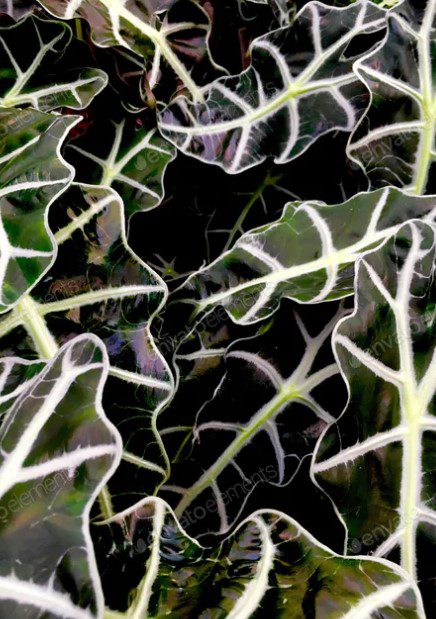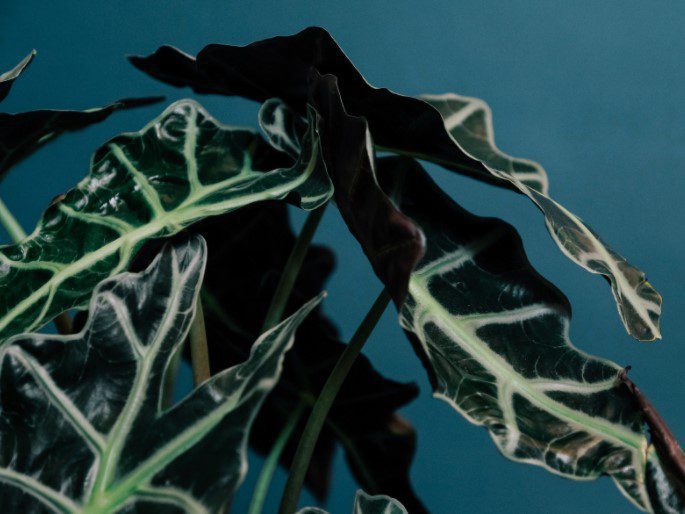Alocasia
Alocasia odora is a wonderful landscape plant. Individual heart-shaped leaves with rounded tips can be more than 3 feet in height and width.
Leaves stick straight up, giving them prominence in the landscape. With maturity, the dark green leaves of this giant elephant ear, as it is commonly called, become increasingly quilted or puckered in appearance.
Like other members of Araceae family, inflorences are green and white spathes that cover the tiny flowers. When the plants bloom, the flowers are very fragrant in summer, but they do not last for more than a week or so. Bright, orange-red, inedible fruits follow the blossoms.
PLANT FACTS
Alocasia is a genus of the Arum family Araceae. Members of this family are commonly called aroids. There are about 80 species, most of them natives of the tropical and subtropical regions of southern Asia.
Hybridization efforts have contributed more kinds into the market.
Alocasia is a broad-leaf rhizomatous or tuberous perennial. Like a typical aroid, the plant has the jack-in-the-pulpit inflorescence that appears at the end of a stalk, hidden behind the leaf petioles.
This kind of araceous flower is unremarkable and dries up quickly. Many call the plant Elephant’s Ear, a name inspired by its gorgeous foliage.
These leaves, ranging from 20cm to 90cm in length on long petioles, are either heart or arrowhead-shaped, broad, and often have striking markings and colors.
Most varieties are green or black, with some having outstanding white ribs and variegated leaves.
There are huge species that can reach over three meters tall and wide. Hence, alocasia plants are used in various ways in a garden.
The large-leaf types are often used sparingly, and the small-leaf types are mass planted as edging, ground cover, or border for a bold tropical result.
Is Alocasia hardy?
I doubted something so spectacular and tropical-looking would survive outdoors in Zone 8. However, my large potted specimen spent the winter outdoors with no protection.
The leaves completely disappeared, and I thought it a goner for sure. But with the return of spring, the leaves emerged with more vigor than ever.
Plants are hardy in Zones 7 and higher and can tolerate temperatures to 0 F. Gardeners farther north than Zone 7 have had great success growing Alocasia in containers that are moved indoors during the winter.
A gardener from Canada grows the plant in her living room, making a stunning addition to her interiorscape.
Culture and propagation
Plant this tropical beauty in full sun to partial shade in fertile, well-drained soil. The plants should be divided every year or two. If allowed to grow in clumps, the leaves become small.
If planted singly, the leaves grow to their maximum size and make a dramatic statement in the landscape. Plants can live in shallow water or in well-drained soil that is kept consistently moist.
To increase your alocasias, remove “pups” that grow at the base of parent plants. Would you mind sharing them with relatives and friends or planting them in other places in the garden?
Seeds can be collected after the spathe dies, and the bright red berries that contain the seeds mature. Sow the seeds shallowly in damp, sandy soil where they germinate readily.
POPULAR VARIETIES
In all shapes and sizes, the Alocasia is considered rather complex. With so many hybrids and cultivars available in the market, it is often difficult to identify them all. Nonetheless, they are highly valued for their attractive leaves.
One of the larger varieties, Alocasia marorrhizos, commonly known as giant taro or upright Elephant’s Ear, is a native of the rainforest of Tropical Asia. The rhizomes and petioles are edible. The stalk grows bigger each time a new leaf appears.

With impressive upright stems and large, gorgeous leaves pointing to the sky, Alocasia marorrhizos selections come in various forms, e.g., A. Marorrhizos Variegata has leaves that are in shades of green, cream, and white, Metallica has dark magenta-green petiole, Seven Colours has obvious blotches of yellow on leaves and Lutea has yellow stems and veins.
The hybrid (not a species) Alocasia x mortfontanensis Andre (synonym: Alocasia longiloba x Alocasia sanderiana hybrid and Alocasia x amazonica), commonly known as African Mask or Amazon Elephant’s Ear, is perhaps one of the most popularly grown types.
It’s striking in form. Its dark green, glossy leaves have showy scallop edges and contrasting white margins and veins. The plant can grow to about one meter in height.
Alocasia reginula Black Velvet, also known as the little queen of Alocasia, is a native of Southeast Asia.
Usually, not more than 30cm high, this eye-catching dwarf variety of the Elephant’s Ears has a heart-shaped, green-black, velvety leaf with silvery-white embossed veins.
If you touch and feel the leaves, you will be surprised by how thick and stiff they are!
Other varieties that have a size similar to A. reginula are Alocasia Hilo Beauty, Alocasia Hana, Alocasia cuprea and Alocasia rugosa.
Each has its own intriguing and charming appearance that makes a lasting impression.
HOW TO GROW
- Alocasia plants like plenty of light but cannot handle strong direct sunlight. So grow them in bright places like the edge of the porch or below shaded trees.
2. Bigger alocasias like the A. marorrhizos species and its varieties require more light and can tolerate direct sunlight, growing best in full sun to partial shade locations.
3. Use any loose and well-draining soil mix. Water plants daily to keep the soil moist all the time.
4. Feed the plant with any balanced fertilizer and discard wilting leaves or even the inflorescence, if any, to promote a healthy and vigorous growing plant. Propagate by dividing its rhizome.
Tips
When choosing a plant from a nursery, observe where it has been placed. At home, grow the plant in the same kind of environment.
Some species of alocasia are poisonous if ingested – so be careful!
After flowering, the plant will usually slow down. New growth will appear after some time.
Plants from the genus Xanthosoma, Colocasia, and Caladium are also referred to as elephant’s ears.























